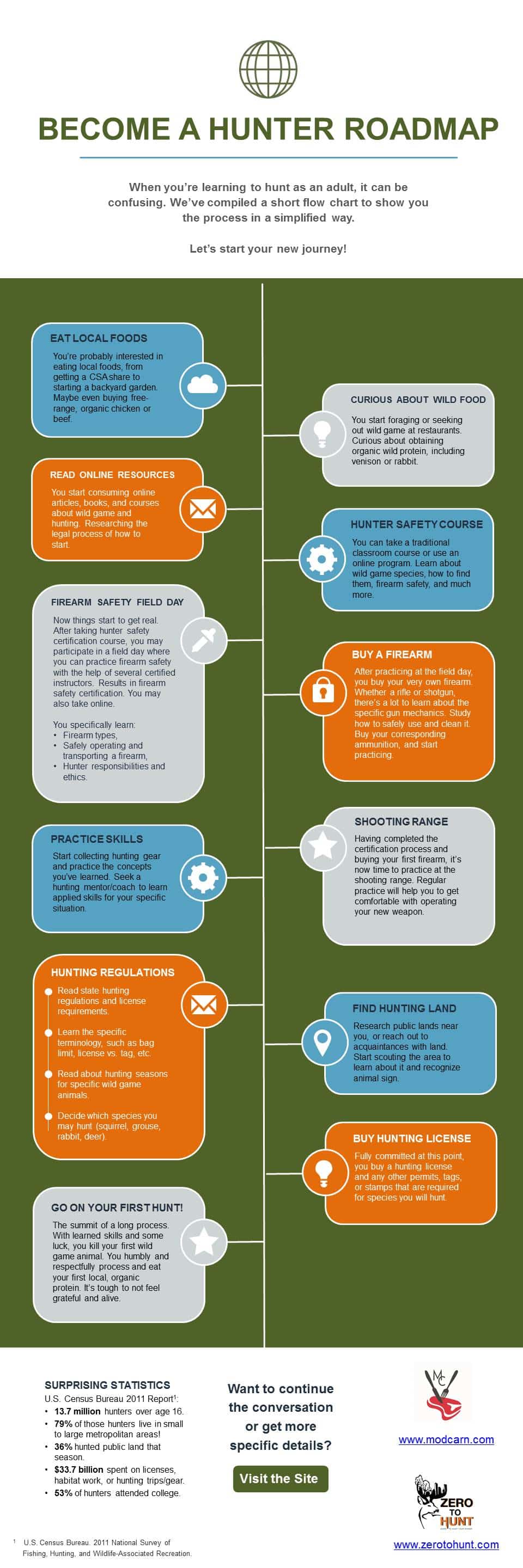Understanding Hunting Regulations for Beginners
When learning a new skill, it can feel overwhelming at first. Learning the rules and unusual terminology is often the first step in the process. Think back to when you got your driver’s license. How many boring, dry regulations did you have to study and memorize? Far too many!
But we know they’re there for a very important reason. They help protect other drivers and ourselves from harm, and give us some structure so it’s not total chaos on the road.
This is also true with learning to hunt as an adult. We need to understand the hunting regulations and safety protocols to participate in it. But that’s easier said than done. There are more and more programs for getting youth outdoors. But what if you have little or no experience with it and want to start as an adult? There’s probably no mentor or relative to show you the ropes, as many youth hunters have.
This post is meant to show you the overall legal process, if you will, of becoming a hunter. You wouldn’t take a cross-country trip without some sort of road map to guide you, right? The same goes for learning to hunt. Take a look at the accompanying infographic below to show you the road map you’ll need to take to become a hunter. Let’s jump right in because there’s a lot to cover.
Hunter/Firearm Safety Certification: Do You Need It?
The process starts with taking a hunter safety education course. Basically, this is a short course meant to teach you the absolute basics of hunting, including wild game species, scouting techniques, and firearm safety and use.
Traditionally, this was only offered in a classroom setting at certain times of the year. But with busy work schedules and other personal commitments, it can be hard for many of us to get to these classes. And many adult hunters have unspoken fears about being the only adult in a room full of 12 year olds who may already know more about hunting than they do. That’s understandable.
Thankfully, there are now online resources you can use to avoid a classroom setting altogether. From the comfort of your couch, you can take a hunter safety course on your own schedule.
Typically, hunter safety courses conclude with a field day at a local shooting range. There, you can apply the firearm safety concepts you learned in the educational course and get personalized instructor tips as you work your way through the field course. While this actual field experience is really helpful for many, you can find your way around the field day if your schedule just won’t open up.
One way to do that is with HunterCourse.com, which is a great website that currently includes state-approved online programs for 26 states and 7 Canadian provinces. As mentioned, some states and provinces allow certain individuals to take a virtual “field day” leading to your firearm safety certification. Minnesota, for example, allows adults (18 years or older) to take their entire hunter safety course and firearm safety day online. I’d encourage you to check them out and see if your state in listed.
Decoding Hunting Regulations
After you get your firearm safety certification, you’re able to buy a hunting license. But before you do, you should study up on the hunting regulations for your state.
Unfortunately, reading the hunting regulations can sometimes feel like you’re trying to interpret an ancient Egyptian text using a broken decoder. As with any laws and regulations, they are sometimes written in a confusing fashion, which is meant to eliminate any possible excuse from would-be violators.
That language can be cumbersome for regular hunters, let alone someone who’s just starting to understand the terminology. So to make it easier for you, we have included some commonly confused terms below that you should find helpful.
License vs. Tag vs. Stamp
- License:
A hunting license is basically your “ticket” to hunt a certain species in their designated season dates. For example, a Minnesota firearm deer license would allow me to hunt deer with a firearm in November, while an archery deer license would allow me to hunt deer with a bow and arrow from September to December. Remember that you’ll need to have completed your hunter/firearm safety certification to buy a license. If you’re a resident in the state you’re hunting in, your licenses will typically be much cheaper than non-resident licenses. Depending on where you hunt, there may also be specific zones or areas where your license is valid.
- Tag:
In most cases, you’ll also need to buy tags in addition to your license. A tag is a physical slip or permit that you fill out and attach to an animal you kill. It contains basic data, including your information, date and time of the kill, and sex or age of the animal. Typically, tags are only used on big game animals (deer, elk, bear, etc.). You also need to tag an animal as soon as you find it, or else you could be violating hunting laws. If you don’t tag it immediately, a game warden (wild game police officer) could assume you were going to take the animal home without using your tag on it. This means you could use it on another animal, which may be over the bag limit.
- Stamp:
Stamps (sometimes also called “validations”) are often sold for specific animals to support conservation actions for that species. For example, you would need a federal duck stamp to hunt waterfowl species. This functions like a hunting license in that it is something you must have in your possession, but you do not need to apply it to the animals you kill. Usually some portion of the stamp money is used to buy additional state lands or fund habitat restoration work for that species.
Bag limit vs Possession limit
- Bag limit:
A bag limit is usually defined as the number of a species you can kill (“take”) in a given period of time. The bag limit is a seasonal limit for most big game animals (e.g., one elk per season), but it is often a daily limit for more plentiful small game species (e.g., five grouse per day). You’ll generally only need a small game license to hunt rabbits, squirrels, or grouse.
- Possession limit:
A possession limit is basically the number of a species you can have in your possession at one time (i.e., in your freezer). Again, it’s often the same as a bag limit for big game animals, but it may be twice or three times the daily bag limit for small game species. This rule helps protect species from over-harvest, should someone be so lucky to get their daily bag limit for a week straight.
Moving Forward
It does take a little work to eventually go on your first hunt, but it’s definitely worth the effort. The important thing to remember in learning these hunting regulations is that they are critical to keep wildlife populations strong and healthy. After all, that’s what we care about and that’s why we hunt.
If you’ve ever been confused about learning to hunt as an adult, don’t be worried or embarrassed. As with any new skill, there are road bumps along the way to mastery. It’s how you respond to those obstacles and embrace the learning that determines what kind of hunter, and person, you’ll be.
If you’d like to learn more about learning to hunt, or how to use this information for your specific situation, look out for our hunting course with Ryan Lisson of Zero to Hunt.



Share this: